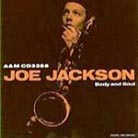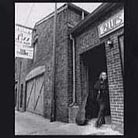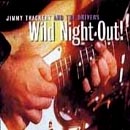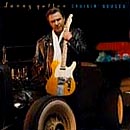 |
|
The speakers came to me fully broken-in so I can't speak to issues thereof. But I can tell you that even fully broken-in, the AE1 Mk3s didn't have that knock-me-over-with-a-feather initial wow factor. In fact, until I at least got the bass dialed in, they rated rather high on the yawn-o-meter, so much so that I wondered how these speakers sell at all. But don't misunderstand; that may not be a good thing for the seller but it's a great thing for the buyer.
Who among us hasn't bought the wrong speaker at least once in our audiophile experience? You go into a store, maybe not even in the market for a pair of speakers, and you hear something that just knocks your socks off and you just have to own. A few months down the road, you find yourself not only not enjoying them all that much but maybe not even listening to much music anymore. You just learned the hard way that the products that reach out and grab you by the [expletive deleted] in the showroom don't always want to let go once you get home. And trying to relax to music while being had down there isn't all it's cracked up to be.
|
|
The Acoustic Energy AE1 Mk3 loudspeakers are not the reach out and grab you (anywhere) kind of speakers. While such generous bass from a diminutive enclosure does impress initially, there's nothing about the bass balance that will create long-term problems. Once properly situated, there's no subjective mid-bass hump that makes the speaker sound larger or more potent than it is. Such bumps often present in smaller speakers can cloud midrange detail. Here, the bass is generous but even. The midrange is clean and clear but the speaker is so full and balanced that it will never sound stark or threadbare. The treble balance is of the sort that pleases in the long-term and almost defies being noticed in the short term. It's relaxed, a bit laid back and, okay, I'll just say it: British.
I won't make excuses or gloss over the British personality. It is what over the long term will keep you in love and captivated by these speakers or inspire infidelity. It is also what will require some care in system matching though I would add that most entry level high-end equipment would probably make a good match, particularly when it comes to solid-state amplification. And given their appetite for power, I suspect that solid-state will likely be the most obvious choice indeed.
|
|
|
|
 |
|
|
Whoops. I didn't mean to include the 125-watt McCormack DNA HT5 power amplifier in the entry-level category. It's not. But in the end, I found it to be an even better match with the AE1 Mk3s than the Accustic Arts Amp 1. The Accustic Arts, though German, has a bit of British reticence as well and the two made a combination that almost put me to sleep; just a bit too laid-back, too rounded and lacking in that decisive incisiveness. I don't want to be bodily accosted but I don't mind a system that asserts itself a bit either.
Ultimately, the only nit I had to pick with the AE1 Mk3s had nothing to do with tonal balance or timbre but with presentation. Try as I might, I couldn't get the speakers to dissolve the rear wall of my room. As you would expect, the speakers project a soundstage that started just in front of the speakers' plane and went back to the wall from there but never much beyond it. While a lot of my listening was done via the Bel Canto PRe6 preamplifier, I inserted the tube Shindo Partager for the express purpose of trying to inject a little tube-inspired depth to the presentation. No luck. Pulling the speaker further into the room didn't help either.
Don't get me wrong. I'm not saying that they 'pancaked' the music; it wasn't nearly that bad. And I'll also say that I've been using speakers that cost multiples of what the Acoustic Energy speaker sell for. Maybe my expectations should have been a bit tempered in that regard? |
|
 |
|
In every other aspect of imaging and soundstaging however, the AE1s were superb. Soundstaging was tall and wide. They imaged with excellent focus and specificity, often creating a soundstage wider than the speakers and easily placing instruments beyond the speakers when called upon to do so. Maybe if these compact, startlingly full-range yet relatively inexpensive speakers hadn't measured up so well in these and other ways, I wouldn't have been so critical of the one area where they didn't quite compete with the best.
|
|
Among many of the tests I threw at the AE1 Mk3s, I wanted to see if their polite demeanor would allow justice to well-balanced recordings that exhibited a wide array of instruments. I'd count the AE1s a success if they were able to keep them in relative balance and not squeeze the life out of any of them. Joe Jackson's Body and Soul [A&M CD-5000] was one such recording. It's full of brass that doesn't sound brassy. It's lively but not in your face and a truly dark speaker or system can rob it of all life energy. But the AE1s didn't - not at my usual listening volumes, anyway. While whisper volumes (less than 70dB at the chair) sounded distinctly soft and dark, by the time the speakers reached my usual modest volumes (peaks in the mid 80s) the speakers and music were full of life.
|
|
 |
|
|
|
The first thing I noticed (and you will too) is that wide soundstage, excellent focus and high level of delineation. Bass weight was excellent as was definition. I'm not just talking about Grahm Maby's bass lines but also the lower registers of Ed Roynesdal's piano. That piano was warm and weighty though not unnaturally so on "Not Here, Not Now". Jackson's voice was absolutely spot-on. Getting back to that piano, the sustain at the end of the cut seemed to go on much longer than I'd ever heard it before, indicating low levels of noise and high resolution. |
|
|
 |
|
At first I did think that I was actually hearing a little less air and space than I was used to but the converse was truer. Eventually I judged what I was hearing to contain higher levels of harmonic density and body instead. In contrast to a much more ethereal presentation of speakers like the Silverline Sonata IIs (my long-time reference), the AE1s throw up a rich and meaty presentation that you can really sink your teeth into. You can sense the presence of musicians even with your eyes closed. Levels of coloration were generally very low. While I thought that percussion was just a touch rounded (indicating a touch of softness in the upper mids), guitars, horns and vocals benefited greatly by a lack of coloration and while the AE1 Mk3s probably don't stand out from the competition in the area of transparency as they once did, they are still very good. What is amazing is that you can achieve such a full-range sound along with these levels of transparency from a speaker of this size, in this price class, with this driver complement. Particularly in this price class, one might expect a speaker with a 4-inch mid-woofer to sacrifice some midrange transparency in exchange for some of that bass prowess. One will be pleasantly surprised.
|
|
Eva Cassidy's Live at Blues Alley [G2-10046] has spent a lot of time in the CD player; originally not because it's a great reviewing tool but just because I love the music. In fact, it's not a great recording. With respect to the sound, it's lacking in transparency and it really does benefit from a speaker with a high hear-through factor if one isn't to be distracted by the lack-luster recording itself. In this regard, the AEI Mk3s passed with flying colors. As expected when compared to some other speakers, the CD's cymbal work was a touch dark. Darker, yes. But clouded or opaque? No. In fact, they lost little (if any) in the way of authenticity as they came across smooth and nicely detailed.
|
|
|
|
 |
|
Bass lines are strong throughout the disc and the Acoustic Energy speakers sounded remarkably satisfying. That is not to say that they did a great job for such a small speaker but that they left me wanting for nothing at all. It's one of my life's cruel realities that where the bass frequencies are concerned, the best seat in my listening room is toward the back corner at the computer, decidedly out of the sweet spot. I'm not stuffed into the corner per se, the computer desk is. What I hear from that seat can sound absolutely amazing when the speaker is up to the task. Well, on "People Get Ready" I experienced bass lines so powerful and so utterly detailed that not only could I almost count the cycle, but I could actually feel them in the most highly delineated of fashions in my gut. This reminds me, the AE1s love to play loud. They sound their best and most alive when they are pushed. In my relatively small listening room, I wasn't able to push them loud enough to get them to show any kinds of stress and never did they do anything but retain their composure.
|
|
|
|
Speaking of loud, late in the review process I was in the mood for something loud. Not just loud but loud and rude. Jimmy Thackery And The Drivers' Wild Night Out [Blind Pig BPCD 5021] seemed like just the ticket - and it was. Recorded live in 1994 at Sully's in Dearborn/MI, this CD belongs in the collection of any Texas Blues enthusiast (thanks to Bill Cowen for hipping me to it!). This is not a CD that you play at background levels. No, this is a CD to crank up loud. For me loud means peaks in the mid 90s and to my surprise, the AE1 Mk 3s seemed perfectly within their depth here. Bass lines not only retained their composure but sounded as authoritative as ever. It was difficult to believe that all the chest-thumping, gut-wrenching bass energy was originating from those tiny little speakers. Even snare drums had real depth and |
|
 |
|
| weight. And Thackery's Joe Barden pickup-equipped Stratocaster came across with dense midrange-y Blues gusto. It was almost as if the AE1s came into their own on this recording. As the music got loud, the AE1s responded with a huge window on the sound and the greatest degree of depth I had yet encountered. Again, a thoroughly satisfying and convincing experience. |
|
The Thackery CD was dedicated to blues/jazz/rockabilly guitar master Danny Gatton. Gatton died of a self-inflicted gunshot wound in 1994 and his 1993 release Cruisin Deuces [Elektra 9 61465] seemed like a great place to go next. It was. Here Gatton's 53 Telecaster, with its wider array of tonal colors, allowed the AE1s to stretch their wings. Despite the AE1s' sometime polite demeanor, Gatton's Tele was allowed to scream and wail. The slightly overblown bass lines of "Harlem Nocturne" (which in conjunction with the choice of music makes this one superb CD for the car) came across just that way - heavy and bloated. Somewhat non-musical but still amazing in that all this energy was coming from these tiny speakers. But it wasn't enough to slow things down or end the good times. Try "Thirteen Women" (and only one man in town) for some Rockabilly good time.
Gatton's guitar was sharply defined and penetrating. Better behaved in the bass this time, John Previti's bass lines were weighty and clean. The more complex tapestries and harmonic overtones from "Tragedy" came across with superb fluidity and nuance. Somewhat surprisingly, I was finding out that the AE1s love to mix it up and play loud. As a matter of fact, their rich, smooth and, yes, polite top end meant that they could be played loudly without ever screeching. As well, they tolerated recordings that tended to be recorded on the bright side (most rock and pop?) very well.
|
|
 |
|
|
Conclusion
The Acoustic Energy AE1 Reference Mk3 loudspeaker is an amazing beast. With its tiny 4-inch woofer, it conjures up enough music to both thrill and confound. One could reasonably ask, why such a tiny woofer? Why not a larger speaker with a larger woofer? What's the point? It would almost certainly play louder with less power, right? Obviously the Acoustic Energy is a speaker that was designed for those who don't want to give up their room to their music system and to that end, they are not only a success but an amazing engineering feat. With anything other than pipe organ, nothing about the AE1s' presentation gave up the fact that they are tiny speakers - with the possible exception of their outstanding imaging properties which one expects from speakers this size.
|
|
 |
|
If the only thing the AE1s had going for them was their big sound, I couldn't be so enthusiastic about them. Fortunately, they balance the scales with a measure of quality commensurate with their class and they are an eminently musical pair of speakers designed for long-term satisfaction.
Their laid-back perspective and robust yet polite demeanor will be the deciding factor as to whether or not these speakers are for you - as will the fact that they really do sound their best at above whisper levels (read loud). Certainly they will appeal to those who find a lot of popular speakers too forward and bright as well as those with bright rooms. Provided that you have the amplification muscle that they require, the AE1s will be remarkably forgiving of less than state of the art electronics while they have the resolution to make the most of better gear. As with all components, take the time to listen for yourself and decide. In order to fully appreciate what they can do, the Acoustic Energy AE1 Reference Mk3 loudspeakers may take a longer audition than most. I recommend that you give it to them.
|
|
|
|
|
|
|
 |
|
|
 |
|
 |
|
|
|
|
|
 |
|
|
|
|
|
|
|
|
|
|
|
|
|
|
|
|
|
|
|
|
|